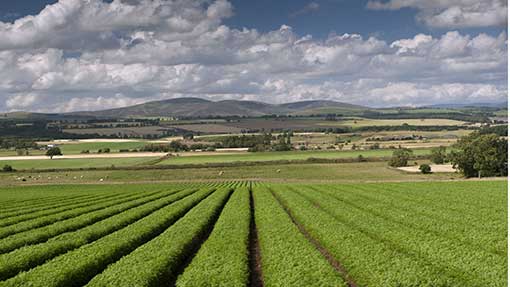English livestock farm incomes rise but arable fall

English livestock farms have been more profitable this year, but arable incomes have fallen, according to provisional figures.
Defra has projected average farm business incomes – essentially net profit – for the year to the end of February.
Incomes on dairy and pig farms are likely to double compared to the previous year, grazing livestock and poultry farm incomes should recover slightly, while cereals and general cropping incomes should fall.
“Poor weather conditions hit all farm businesses in 2012-13 and we saw a 30% decrease in average profits as costs spiralled and output fell,” said NFU chief economist Phil Bicknell.
“Some exceptional climatic challenges have dampened performance in the short term, but the forecasts show the resilience of our industry and demonstrate how some sectors are making steps towards recovery.”
Average dairy farm incomes are expected to rise 96% from £51,500 to £101,000, but this was after they shrunk 40% the previous year.
Milk prices have been 14% better on average than the year before which has encouraged greater production.
Grazing livestock farms in less favoured areas should see a 33% rise in incomes to £26,000, while those on lowland farms should grow 15% to £19,000.
(More: Farm incomes fell in 2012-13, DEFRA survey shows)
Higher lamb values and increased numbers, after stock was held back from the previous year, meant output increased.
Fat cattle prices have been 7% higher on average but throughput and carcase weights were lower.
Average cereal farm incomes are likely to fall 28% to £49,000, while general cropping incomes should drop 8% to £84,000.
Wet weather in 2012 stopped the drilling of autumn crops and led to more lower-yielding spring crops sown for the 2013 harvest.
(More: Scottish farm incomes recover to 2011 levels)
Cereal and oilseed rape prices fell after record global harvests, but this was slightly offset by higher yields and output on farms growing potato and sugar beet.
Average incomes on specialist pig farms should jump 90% from £41,000 to £78,000, reflecting an increase of 9% on finished pig prices and stable feed costs.
Specialist poultry farms should see average incomes rise by 10% to £103,000, with higher output on broiler and egg-laying farms countered by an increase in feed volume.
Mr Bicknell said such information was valuable, though the figures still needed to be revised and hid wide variations between farms.
“It’s a good way to try and compare yourself against the average and the best in the industry,” he said.
“The first hurdle is doing the benchmarking and the next is doing something about it.”
